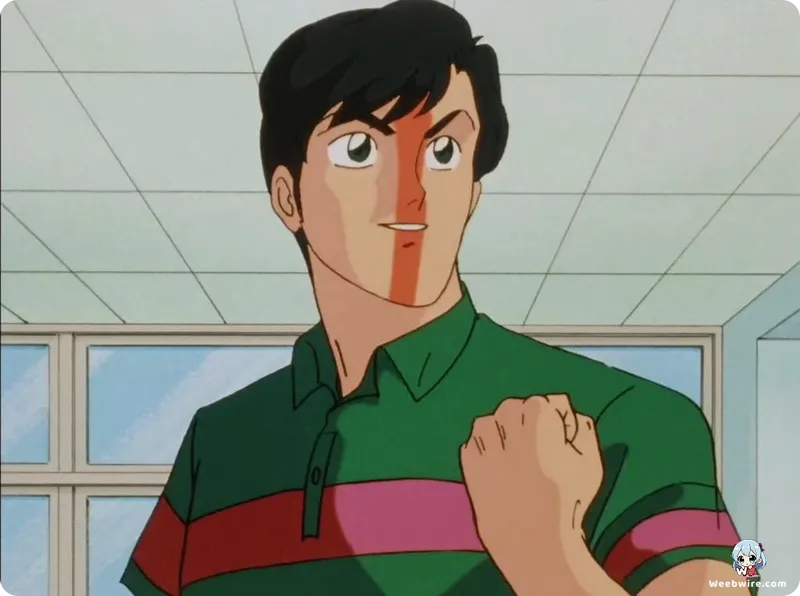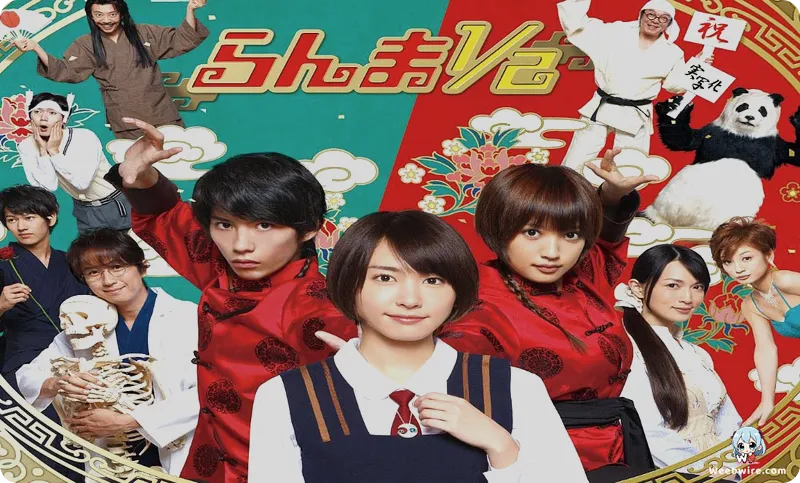Beyond the Cursed Springs: Unearthing Ranma ½'s Enduring Legacy and Hilarious Secrets

Dive deep into the zany, martial arts-infused universe of Ranma ½, an anime phenomenon that first captivated global audiences in April 1989. Beyond its universally recognized gender-bending premise, this beloved series is a veritable treasure trove of fascinating, often overlooked facts and ingenious comedic elements that collectively cement its status as an undisputed classic. Masterfully conceived by the legendary Rumiko Takahashi, renowned for her unparalleled knack for romantic comedy and rich ensemble casts, Ranma ½ transcends the conventional martial arts genre, offering instead a vibrant tapestry of character-driven humor and unforgettable running gags.
The Absurdity of Jusenkyo: A Springboard for Comedy
At the very core of Ranma ½'s delightful pandemonium lies the infamous Jusenkyo, or Cursed Springs of Jusenkyo. This mythical training ground, nestled in China, serves as the ingenious catalyst for the series' central comedic engine: a collection of mystical curses that irrevocably transform anyone who plunges into a specific spring into a distinct being upon contact with cold water, only to revert to their original form with hot water. While Ranma Saotome's iconic transformation into a pigtailed girl (the Spring of Drowned Girl) is perhaps the most famous, the absurdity knows no bounds. His formidable father, Genma, famously morphs into a colossal panda (Spring of Drowned Panda); the perpetually directionally challenged martial artist Ryoga Hibiki assumes the form of a small black pig (Spring of Drowned Piglet); the fierce Amazonian warrior Shampoo becomes a cat (Spring of Drowned Cat); and her determined rival Mousse inexplicably transforms into a duck (Spring of Drowned Duck). These distinctive, often hilariously inconvenient, transformations are far more than mere plot devices; they are the ceaseless wellsprings of infinite running gags, propelling characters into laugh-out-loud awkward social predicaments, profound identity crises, and unexpected comedic pairings, thereby solidifying the series' unparalleled fusion of high-octane action and brilliant slapstick comedy.
Takahashi's Masterful Character Development
Rumiko Takahashi’s storytelling prowess truly shines in her meticulous character development, rendering even the most outlandish scenarios surprisingly relatable through universal human (and animal) emotions. Every character in the expansive cast, from the hot-headed protagonist Ranma and the perpetually exasperated Akane Tendo to the fiercely competitive rivals and comically overbearing family members, contributes uniquely to the series' intricate comedic ecosystem. Takahashi expertly navigates a complex web of unrequited affections, bizarre arranged engagements, and intense martial arts rivalries, ensuring that the captivating will they/won't they dynamic between Ranma and Akane is consistently punctuated by delightful and unpredictable chaos. Her remarkable ability to infuse every character, regardless of their prominence, with distinctive quirks and compelling motivations is a signature of her acclaimed work, ensuring that even fleeting appearances leave an indelible mark on the audience. The emotional depth she weaves into these comedic scenarios allows viewers to connect with the characters on a deeper level, making their absurd predicaments all the more endearing and memorable.
Martial Arts with a Comedic Twist
Beyond the iconic transformations, Ranma ½ is widely celebrated for its utterly bizarre and frequently hilarious martial arts techniques, which often prioritize maximum comedic impact over conventional combat effectiveness. Forget rigid, traditional fighting styles; here, epic battles unfold featuring techniques like the infamous Cat-Fu (triggered by Ranma’s extreme childhood phobia of felines, a result of his father’s misguided training, transforming him into a cat-like berserker), the devastating Moko Takabisha or Fierce Tiger Explosion (a potent aura blast), or even the comically inept Kuno Ichimonji (Tatewaki Kuno’s signature kendo move, often leading to spectacularly disastrous outcomes). Genma's Anything-Goes Martial Arts epitomizes the series' irreverent spirit – a constantly evolving, frequently dishonorable, and endlessly entertaining style. These techniques are not merely visual spectacles; they often serve as pivotal catalysts for profound character development, uproarious comedic misunderstandings, or even unexpected resolutions to the most preposterous conflicts, adding layers of humor and unpredictability to every confrontation.
The Enduring Charm of Iconic Running Gags
The enduring appeal of Ranma ½ is significantly bolstered by its iconic running gags, which are as cherished by fans as the characters themselves. For instance, Akane Tendo's notoriously abysmal cooking is a comedic masterpiece; her culinary abominations are frequently depicted as sentient, toxic, or simply inedible, often forcing Ranma (in his male form) to consume them with hilariously explosive consequences. Then there’s Ryoga Hibiki’s legendary, or rather, infamous, sense of direction – or complete lack thereof – which sees him perpetually lost, even after a short stroll, frequently ending up on the opposite side of the globe before dramatically reappearing precisely when he’s least anticipated. Ranma's deeply ingrained fear of cats, a trauma rooted in his childhood, serves as another frequent wellspring of comedy and plot progression, often culminating in his powerful yet uncontrollable Cat-Fu state. Shampoo's relentless and often physically aggressive pursuit of Ranma, showcasing her Amazonian strength and unconventional displays of affection, provides a constant stream of laughter, as does Tatewaki Kuno's hilariously delusional chivalry and his endless, misguided quest for “the Pigtailed Girl” (female Ranma) and Akane. These recurring jokes not only provide consistent humor but also define the characters and their relationships, making them instantly recognizable and beloved.

The Power of Voice: Bringing Characters to Life
The phenomenal voice cast also played an instrumental role in breathing vibrant life into these unforgettable characters. The inspired casting of Kappei Yamaguchi for male Ranma and Megumi Hayashibara for female Ranma was a stroke of absolute genius, allowing for nuanced and distinct performances that perfectly encapsulated the essence of the same character across two vastly different physical manifestations. Their dynamic vocalizations, alongside Noriko Hidaka's portrayal of the often exasperated but ultimately warm-hearted Akane, imbued the characters with their unforgettable personalities and significantly heightened the comedic timing, rendering their unique quirks even more memorable for generations of dedicated fans. Their collective performances stand as a powerful testament to the transformative power of voice acting in the realm of anime, proving that the right voices can elevate a series from great to legendary.
Anime Adaptation: Expanding the World of Nerima
While largely remaining faithful to Rumiko Takahashi's original manga, the anime adaptation, primarily by Studio DEEN, judiciously took creative liberties, introducing a substantial amount of original filler content and character mini-arcs. This strategic decision was not solely to extend the series' run but also expertly served to expand the vibrant world of Nerima, delve deeper into side characters, and further elaborate on existing comedic situations. These anime-original storylines, while occasionally diverging from the manga's direct narrative, were consistently crafted with the series' core spirit firmly in mind, providing viewers with additional adventures and gags that seamlessly integrated into the established universe. This approach further endeared the series to its audience, significantly contributing to its widespread popularity and extensive episode count. Ultimately, this creative strategy allowed the anime to forge its own distinct identity and offered rich additional opportunities for profound character exploration and uproarious comedic scenarios, solidifying its place as a beloved classic.
Credits
Ranma ½
Author
Rumiko Takahashi
Cover Art
Rumiko Takahashi
Studio
Studio DEEN
Publisher
Shogakukan
Producers





